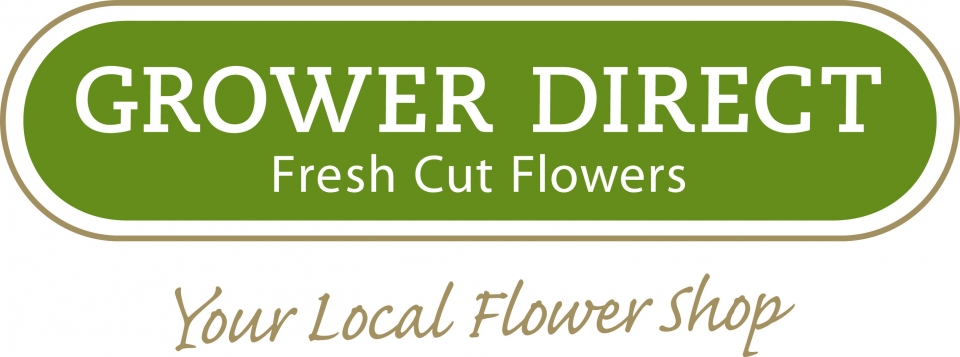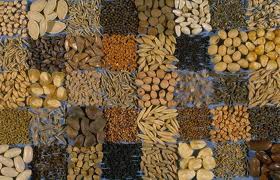![]() Prices in Canadian Dollars.
Prices in Canadian Dollars.![]() Prefer to call and speak to a floral agent? 1-877-277-4787
Prefer to call and speak to a floral agent? 1-877-277-4787
Saving & Storing Seeds
Saving & Storing Seeds
How To Save Your Own Seeds
Seeds are little gems of genetic information, extremely valuable, compact packages with everything the plant needs to know to develop into a full grown tomato, elm tree or pink-on-salmon larkspur. They are easy to store, package, transport, and handle. They are relatively valuable commodities as well.
Over the winter everyone goes through the seed catalogues trying to pick the best varieties and types of plants without spending an arm and a leg on seeds. You can save yourself, at least an arm, if not the leg too, by saving some of your seed from year to year. Many people are willing to trade seeds, or even buy them from you.
BIOLOGY
Seeds come in all shapes and sizes. The basic unit consists of 1) an embryo, the tiny bud of new growth, 2) the stored energy source, the endosperm, and 3) several layers of seed covers, including the outside, hard seed coat. The best seeds will be fully mature, with good hard seed coats, well filled with endosperm and ready to fall off the plant.
DORMANCY
Seeds are usually in some type of dormancy when they first mature at the end of summer. It is often necessary to “break” dormancy in the seeds before they will germinate. This is done in several ways, cold treatment, scratching or breaking the seed coat to let water in, chemical treatments, even passing through the gut of an animal can have the desired effect.
Seeds that fall off the mature plant in the fall and grow again in the spring, self sowing, are getting a cold treatment over the winter. You can mimic this effect by putting your seeds in the fridge for a month or even in the freezer for a few weeks. For hard to germinate seeds, you can put them in the fridge packed in wet peat moss.
Fortunately, most of the common plants will germinate just fine with no pre-treatment, or just ordinary cold temperatures in the garage or cold room over the winter. For delicate, tropical type plants, the seeds can be damaged by freezing, so keep these ones inside.
COLLECTING
Collect seeds from the plants as late as possible, but before too many of them fall off and get lost. You will need to dry the seeds for a few weeks before you put them away for the winter. The easiest method is to tie whole stems together in bundles and put the bundle head down inside a paper bag. Tie the bag shut securely with a rubber band and hang this up to dry. This way you don’t lose any seeds while the plant is drying. Be sure to label the bag right away.
GENETICS
Always save seed from the best plants and leave the worst ones. This is especially important for diseased plants, weak or spindly ones and plants that seem more susceptible to insects and diseases. It is easy to carry over spores and other propagules of diseases, even insects pests, on seeds.
The exception to this rule is if you get an unusual color or shape from a new plant. This may be a ‘sport’, a random mutation, and could be interesting. Often these random mutations are weaker than the parent plants. The goal of plant breeders is to keep the new color or shape in the breeding line, while breeding back in the vigorous growth habits of the parent plants.
A major consideration when collecting your own seed is whether the plant will breed “true to type”. If you grow dark blue, maroon and white lupines in a bed together and save the seed, the resulting progeny will be mostly pink flowered. To keep your colors true with lupines and some other flowers, you either have to grow them in separate beds, quite far apart, or hand pollinate them and cover the fertilized flowers with paper bags to prevent further contamination from insects.
Sunflowers have the same problem. Cucurbits, including ornamental gourds, pumpkins and squash will freely pollinate each other so seeds saved from this year’s squash are likely to produce plants with inedible fruit.
There are very few plants that will cross pollinate with a plant of a different species. You do not need to worry about your pansies fooling around with your petunias. If you have only one plant of a particular species, it’s probably safe to assume the seeds will be true.
Saving seed from only the best plants or the ones with desirable characteristics is known in plant breeding circles as “selection”. This was the main method of plant improvement for centuries until plant genetics was better understood. This is still a valid method for developing you own special strains of flowers, vegetable or other plants that are of interest to you.
Hybrids are crosses with particular parents. For instance a blue flower and a red flower are crossed to get a pink progeny. You cannot, however, take seeds from the pink flower and get pink again. You will get a mix of blue, red, white, pink and a few other possibilities. That’s why hybrids are so special.
STORAGE
Once your seeds are fully dried and mature, you can store them, as is, in boxes in a cool, dry place away from raiding rodents, moisture and fluctuating temperatures. The seed has a finite amount of life energy stored inside. If it picks up moisture, or gets warm, or both, it will try to grow and use up some of its energy. Because the seed is a living thing, it is slowly metabolizing energy and any extra heat will cause it to metabolize it’s finite energy reserves faster.
It is definitely easier to handle and store seeds if they are cleaned first, the packages get a lot smaller and there’s less debris to introduce fungus, bacteria and other problems.
The best way to store cleaned seed is in air tight, water tight containers, in the fridge. This keeps the life of the seed intact as long as possible.
CLEANING
Cleaning the seed is mostly to reduce the size of packages to store and handle, and reduce disease carryover. If you are selling seed you will need to know how much actual seed is in the package separate from the plant debris.
First make sure the plant and seeds are crispy dry. Separate the seed heads from the stems and leaves as much as possible. Some seeds will be inside pods that need to be broken open. These are the easy ones, just break them open into a clean container and you’re done.
Others will be mixed with plant debris. The first step is usually to pass the materials through one or more sieves with smaller and smaller spaces in the screens. You can use kitchen colanders and strainers as well as window screen materials, fabric, whatever is handy and has a suitable mesh size.
You should be able to get down to a mix of seeds with debris of the same size mixed in. For your own use,you can plant the seed and the debris together, so you may not need to clean any further, unless disease carryover is a problem. For that matter, you can plant straight into the garden from the coarse seed heads and stems also if you choose.
You can separate the “chaff” from the seed by winnowing, blowing across the seed so that the light leaf pieces blow out of the pan, leaving the heavier seed behind. Try doing this outside and let the wind do the winnowing. You can get a similar effect if you shake the seed in a low flat pan so that the seed falls towards you to the low end of the pan and the debris stays at the top.
NATIVE PLANTS
There is a large interest in seeds of native plants. These are a special case and should be handled with care. The Alberta Native Plant Council recommends that you collect only 10% of any stand, leaving the rest for animals to eat and for the plants to regenerate. If you want to collect a large volume of native plant seed it is best to collect a small amount from the wild and then grow this in your garden until you have a sufficient quantity. All Alberta native plants would be expecting a cold winter dormancy period, and so should be cold treated before planting.
RECORD KEEPING
It’s very important to label the seeds as you pick them. Many people note the name, place of origin, date, and any other pertinent details. If you are looking for results from year to year it will be important to keep a journal of what grew, what color it was, and so on.
Here is a list of some plants that will set good seed that are suitable for collecting, and some that won’t:
|
|
These following plants will cross pollinate but progeny plants will still be nice:
- Bachelor Buttons
- Columbine
- Cosmos
- Delphinium
- Iris
- Larkspur – goes to mid blue
- Lupine – always pink
- Poppies
- Pastel Yarrow – probably reverts to white
These will cross pollinate to give unpredictable results:
- Corn
- Cucurbits – gourds, squash, pumpkins
- Larkspur
- Sunflowers
And so on. The list is endless. Just give it a try and see what grows and what doesn’t.
Have fun & good luck!


